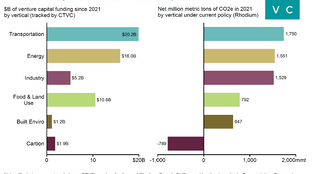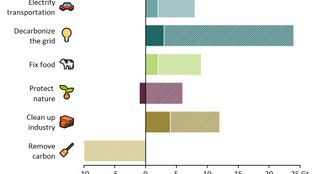
Rhodium: Taking stock of Paris targets
Late breaking ‘Inflation Reduction Act’ changes odds for the better w/ Rhodium’s Ben King
This week, we caught up with Matthew Botill, Chief of Climate Investments at the California Air Resources Board, about CARB’s perspective on the wildfire crisis.

Matthew Botill, Chief Investment Officer at CARB
This week, we caught up with Matthew Botill, Chief of Climate Investments at the California Air Resources Board, about CARB’s perspective on the wildfire crisis. CARB is charged with protecting the public from the harmful effects of air pollution and developing programs and actions to fight climate change. The “clean air agency” of California is working towards better understanding the rise and impacts of wildfires as well as devising innovative policy-oriented solutions.
How is CARB addressing wildfires?
What makes this year different from the past years of wildfires from an air quality perspective?
As of September 23, 2020, over 3.6 million acres had been burned by nearly 8,000 wildfires in the state (https://www.fire.ca.gov/incidents), which is nearly double the previous high of 1.975 million acres in 2018, and the fire season is not over. Although previous years have exhibited a significant degradation in air quality resulting from wildfire smoke, what makes 2020 different from previous years is the unprecedented levels of PM2.5 in the atmosphere (exceeding 600 ug/m3 in some locations) and the geographic extent and duration of the impact, with nearly the entire state experiencing some smoke impacts over the past month.
Can you put into perspective the health and environmental impacts of wildfires (in terms of GHG emissions, air pollution)?
Health:
We are still continuing to grow our knowledge, but CARB is deploying our laboratory, research, and monitoring teams to better understand the health effects of these wildfires:
GHG:
Do you find that certain groups (e.g., low-income folks or minorities) are more impacted by the environmental and health consequences of wildfires than others?
Even healthy people may experience symptoms in smoky conditions or after exposure particularly those who work outdoors. However, some groups are more impacted by wildfire smoke – especially children, the elderly, pregnant women and people with heart or respiratory conditions. These sensitive groups are advised to limit outdoor activities, especially when the Air Quality Index (AQI) reaches ‘Unhealthy for Sensitive Groups.’
Elevated pollution from other sources such as high ozone in the summer and pollution from living near traffic or other industrial sources will compound the effects of wood smoke exposure. People living near high traffic and other sources are often in communities of color and are known to be more sensitive to the impacts of pollution, including particulate matter pollution.
How can we quantify the cost of health impacts of wildfires (ie. AQI)? In the short term and long term?
The impacts and health costs of the impacts of wildfire are an ongoing research concern, but it is known that short term exposure to wildfire results in increased hospitalizations and emergency room visits. The long term impacts of wildfire are still being studied. Effects in wildland firefighters have shown reduced lung function and a possible increase in hypertension.
What are areas of innovation / investment that can mitigate wildfires and its effects? What kind of projects do you focus on funding at CCI?
Right now one of the big questions that California is grappling with is how to fund/ support and maintain the large increase in forest management activities needed to reduce wildfire risk and support resilient forests with long-term carbon storage. According to CNRA, over 15 million of California’s 33 million acres of forest-land is in need of treatment through thinning, restoration, or prescribed fire.
There are plenty of opportunities for innovation/investment here. One area CARB and other State agencies are interested in is how to utilize the forest residue to produce advanced biofuels and/or hydrogen that can support California’s long-term goals to decarbonize transportation fuels and industrial energy needs. We need strategies that can economically turn forest residue into fuels or energy without the criteria and toxic emissions associated with typical biomass combustion. Anaerobic digestion, advanced gasification, and other techniques are promising from an energy/fuels standpoint. There are also opportunities to look at forest residue to create alternative wood products, like cross-laminated timber, to displace more traditional carbon-intensive materials.
Every year sets a new record for wildfires. Where do we go from here and what will the future look like?
California state agencies are working together to better understand natural carbon in a changing climate and how best to stabilize carbon in California’s ecosystems. Maximum carbon sequestration in natural and working lands is not the goal; sustainable lands are the goal (e.g. overstocked forests have high sequestration, but are not sustainable).
Interested in more content like this? Subscribe to our weekly newsletter on Climate Tech below!

Late breaking ‘Inflation Reduction Act’ changes odds for the better w/ Rhodium’s Ben King

Out in front on carbon removal, Nan Ransohoff sets a new tier for climate leadership with Frontier

John Doerr and Ryan Panchadsaram's new book on OKRs to get to Net Zero